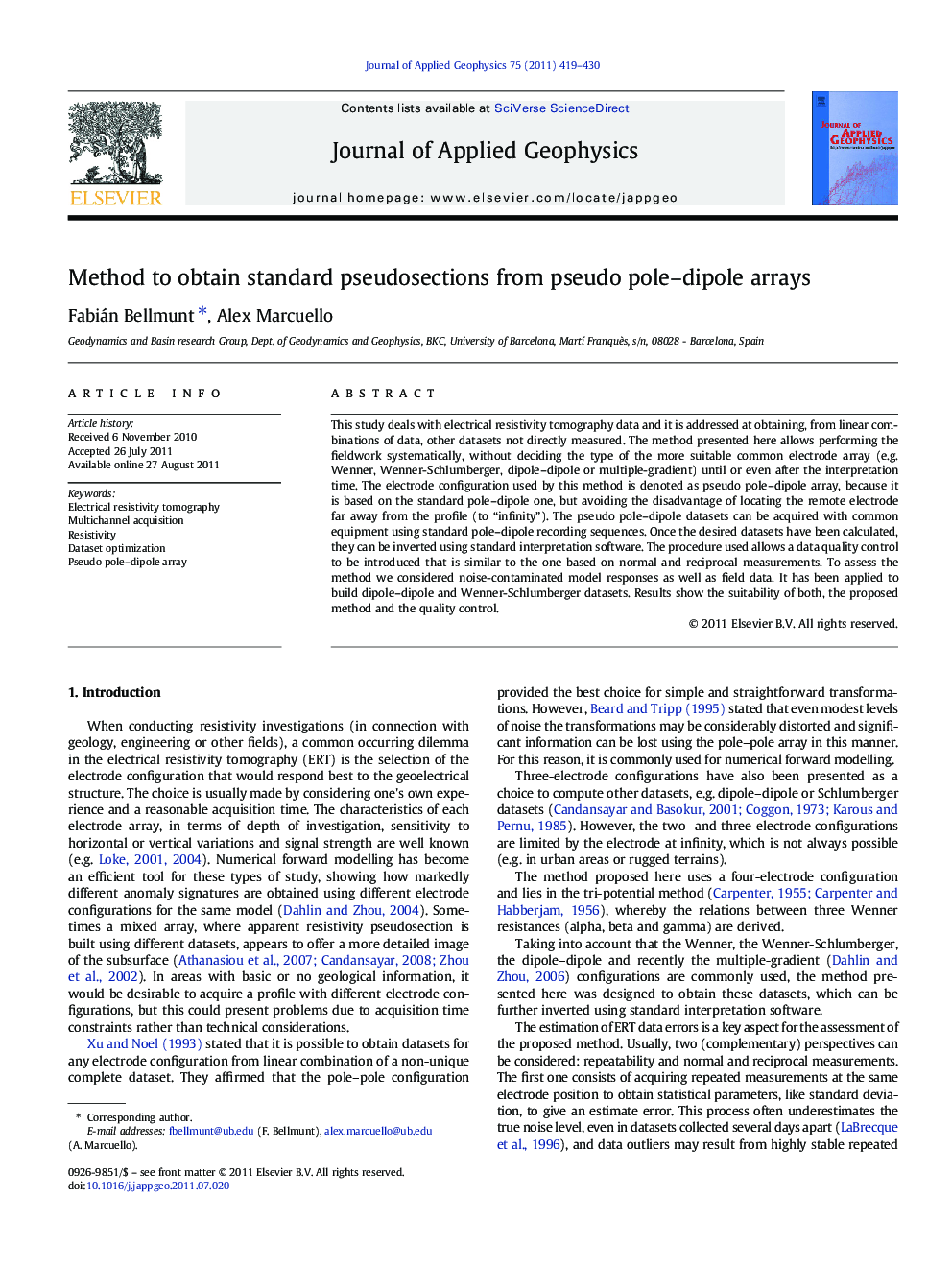| Article ID | Journal | Published Year | Pages | File Type |
|---|---|---|---|---|
| 4740582 | Journal of Applied Geophysics | 2011 | 12 Pages |
This study deals with electrical resistivity tomography data and it is addressed at obtaining, from linear combinations of data, other datasets not directly measured. The method presented here allows performing the fieldwork systematically, without deciding the type of the more suitable common electrode array (e.g. Wenner, Wenner-Schlumberger, dipole–dipole or multiple-gradient) until or even after the interpretation time. The electrode configuration used by this method is denoted as pseudo pole–dipole array, because it is based on the standard pole–dipole one, but avoiding the disadvantage of locating the remote electrode far away from the profile (to “infinity”). The pseudo pole–dipole datasets can be acquired with common equipment using standard pole–dipole recording sequences. Once the desired datasets have been calculated, they can be inverted using standard interpretation software. The procedure used allows a data quality control to be introduced that is similar to the one based on normal and reciprocal measurements. To assess the method we considered noise-contaminated model responses as well as field data. It has been applied to build dipole–dipole and Wenner-Schlumberger datasets. Results show the suitability of both, the proposed method and the quality control.
► Pseudo pole–dipole data can be transformed into other datasets in a simple way. ► The pseudo pole–dipole array can be easily implemented in common instrumentation. ► A data quality control, similar to the normal and reciprocal data, is established. ► Results prove the applicability of the pseudo pole–dipole array and quality control.
